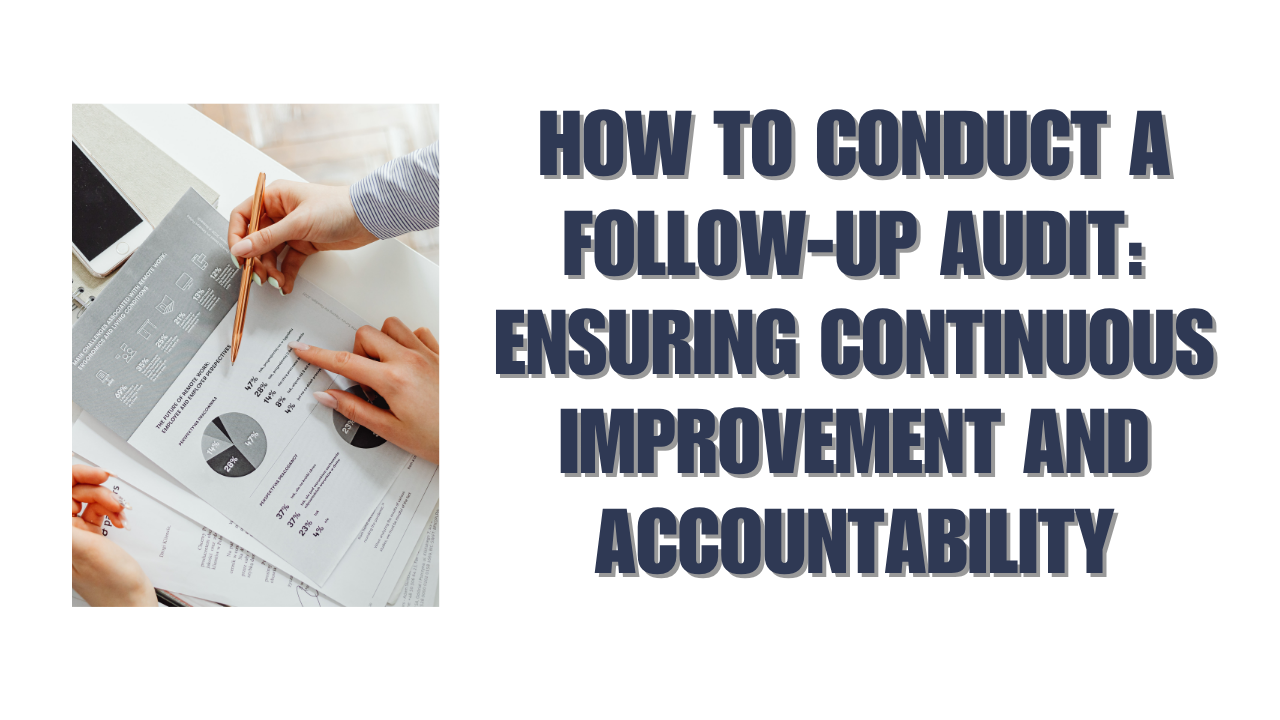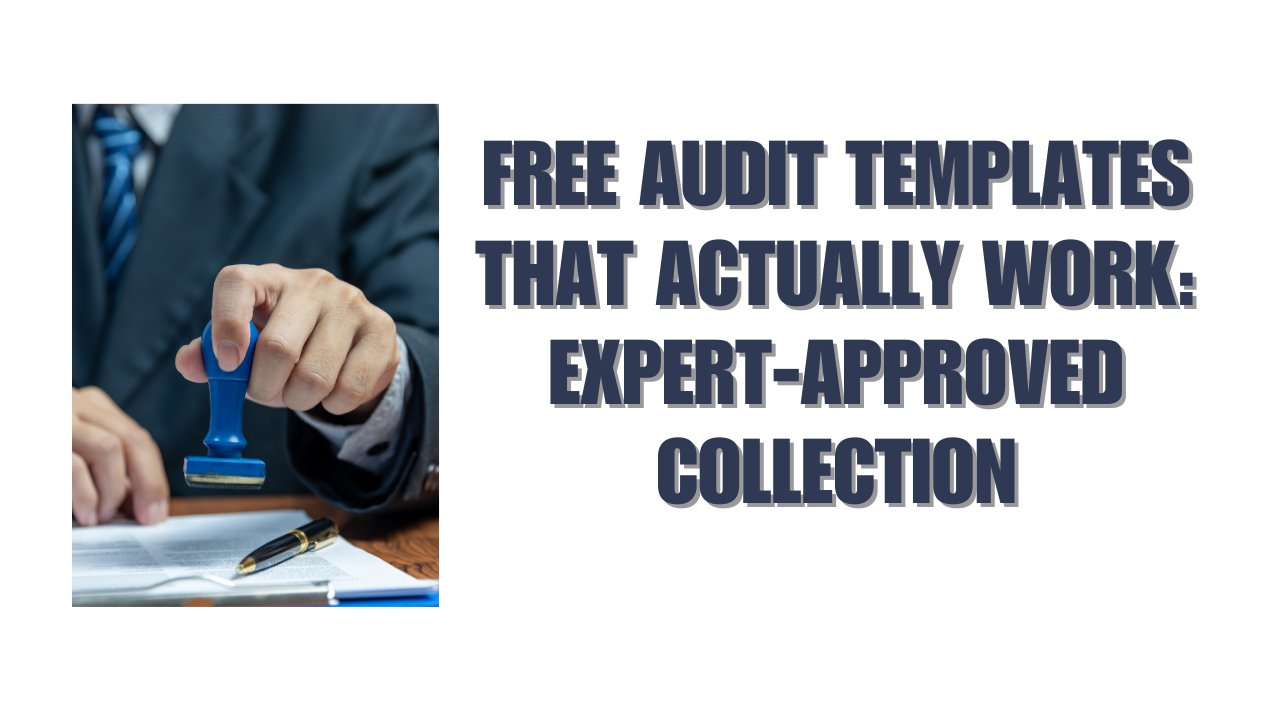An audit is more than a one-time event – it’s part of an ongoing process to strengthen your organization’s controls, compliance, and risk management. After the initial audit, it’s crucial to confirm that the recommendations have been implemented effectively. This is where follow-up audits play a vital role.
Follow-up audits provide assurance that issues identified have been addressed, controls are working as intended, and continuous improvement is embedded in your operations. By applying a thorough and collaborative approach, businesses can achieve greater accountability and reduce the likelihood of recurring risks.
Why Follow-Up Audits Matter
Initial audit findings often point to control weaknesses, gaps in compliance, or risks that need remediation. Without follow-up, there’s no guarantee these issues will be resolved or sustained. Follow-up audits verify that management’s corrective actions are in place and effective.
Organizations that treat follow-up audits as an integral part of their risk management demonstrate a commitment to transparency and continuous improvement. This not only helps reduce risks but also builds trust with stakeholders and regulators.
Step 1: Careful Planning
Successful follow-up audits start with thorough planning. The original audit report and its recommendations are reviewed in detail to understand the key issues and prioritize areas requiring urgent attention.
Establishing clear objectives and timelines in partnership with management is essential. This ensures everyone understands what will be assessed and allows auditors to access relevant documentation and evidence efficiently.
Good planning sets the foundation for an effective follow-up process, focusing resources where they will have the greatest impact.
Step 2: Collecting and Evaluating Evidence
At the core of follow-up audits is gathering evidence to confirm corrective actions have been implemented. This includes reviewing updated policies, revised procedures, training records, system modifications, and other relevant documentation.
In addition, auditors perform testing to evaluate whether controls are now operating effectively. This often involves testing recent transactions or activities to confirm compliance with new procedures.
Maintaining open communication with process owners is key. Understanding how changes have been integrated helps auditors assess the sustainability of improvements.
Step 3: Assessing Effectiveness and Uncovering Remaining Risks
Follow-up audits go beyond checking boxes – they assess whether risks have been adequately mitigated. Sometimes corrective actions address only symptoms, not root causes, so auditors look for lingering vulnerabilities or new risks that may have arisen.
Clear documentation and dialogue with management about unresolved issues enable organizations to prioritize further improvements and maintain strong risk management.
Step 4: Clear Documentation and Reporting
Effective reporting is essential to communicate findings. Follow-up audit reports summarize which recommendations have been addressed, which need further action, and any new concerns.
A collaborative and constructive tone encourages management to continue improving controls rather than merely focusing on shortcomings. This partnership approach supports ongoing risk mitigation and operational excellence.
Step 5: Continuous Monitoring and Future Planning
Follow-up audits often form part of a continuous improvement cycle. Some areas may require multiple rounds of follow-up or ongoing monitoring to ensure controls remain effective.
Establishing schedules for regular reviews and embedding follow-up into audit programs help organizations maintain a resilient control environment and respond proactively to emerging risks.
The Value of a Structured Follow-Up Audit Process
Organizations benefit significantly from a disciplined and transparent follow-up audit process. It enhances the reliability of financial reporting, reduces exposure to fraud and compliance breaches, and promotes efficient operations.
By working with experienced audit professionals who emphasize collaboration and practical insights, businesses can turn audit findings into meaningful actions and strengthen their governance frameworks.
Conclusion
Follow-up audits are a critical part of ensuring that your organization’s controls and processes improve over time. They confirm that corrective actions have been effectively implemented and that risk management remains dynamic and responsive.
A comprehensive, client-focused approach to follow-up audits supports sustained improvement and stakeholder confidence. By embedding follow-up into your audit lifecycle, you ensure that recommendations lead to real, lasting change.
FAQs
1. How soon should a follow-up audit be conducted after the initial audit?
A follow-up audit is typically conducted between three to six months after the initial audit. This timing allows enough time for management to implement corrective actions and make necessary changes. However, the exact timing depends on the severity and urgency of the issues identified. More critical findings may require an earlier follow-up to reduce risks promptly. Planning the right timing helps ensure that corrective actions can be properly evaluated for effectiveness.
2. What if management hasn’t acted on recommendations?
If management has not acted on audit recommendations, the follow-up audit report will highlight these unresolved issues and the associated risks. Persistent inaction can pose significant threats to compliance and control environments. In such cases, the issue may be escalated to senior leadership or the board of directors to emphasize the need for accountability. This escalation helps ensure the organization prioritizes addressing these important risks and takes corrective measures without delay.
3. Can follow-up audits reveal new risks?
Yes, follow-up audits often uncover new or emerging risks that were not apparent during the initial audit. As business processes, technology, and environments evolve, new vulnerabilities can arise. The follow-up process helps keep risk management dynamic and adaptive by identifying these additional risks early. This ongoing vigilance supports continuous improvement and strengthens the organization’s overall control framework, helping to prevent potential problems before they impact operations or compliance.






